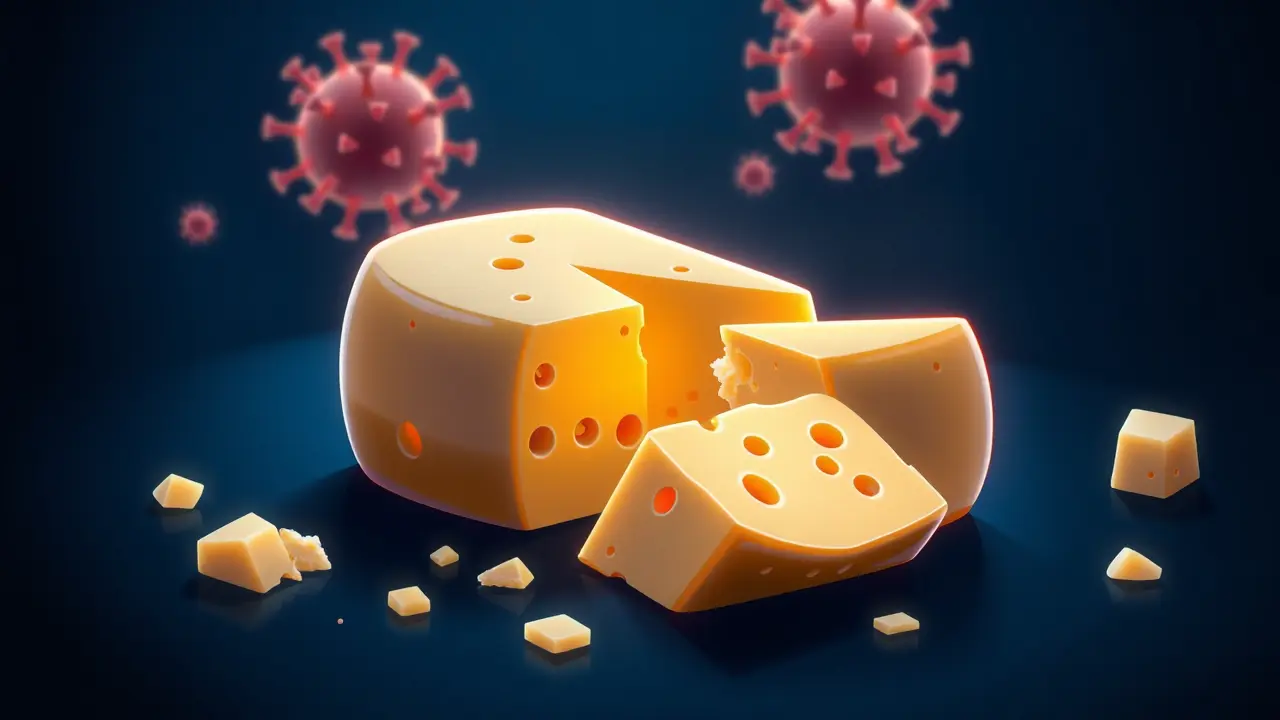Bird flu hiding in cheese? The surprising new discovery
In a discovery that reshapes our understanding of zoonotic disease pathways, researchers have uncovered that the highly pathogenic avian influenza virus H5N1 can persist in raw milk cheese manufactured from contaminated milk, enduring even the 60-day aging period mandated by the U. S.Food and Drug Administration for such products. This finding, emerging from a series of controlled laboratory studies, casts a stark new light on the ecological interplay between industrial agriculture, wildlife disease dynamics, and human food systems.The investigation revealed a critical nuance, however: highly acidic varieties like feta cheese showed no detectable viral presence after processing, pointing to the protective, almost sanitizing, role of a low pH environment—a natural defense mechanism that could guide future food safety protocols. Further animal model testing, conducted on ferrets which are a standard proxy for influenza transmission in mammals, added another layer of complexity.While the ferrets contracted the virus after directly consuming contaminated raw milk, the act of eating the contaminated raw milk cheese did not result in infection, a paradox scientists tentatively attribute to the lower effective viral load encountered through ingestion of the solid cheese matrix compared to the liquid suspension of milk. This distinction is not merely academic; it speaks to the fundamental ways pathogens interact with different environmental mediums, a concept ecologists have long observed in soil and water systems but is now gaining terrifying relevance in our refrigerators.The broader context of this research is the unprecedented H5N1 outbreak that has devastated wild bird populations and poultry farms globally, a silent avian pandemic that has spilled over into an astonishing array of mammalian hosts, from sea lions to dairy cows. The very fact that we are testing for influenza in cheese is a testament to how far this virus has transgressed its traditional ecological boundaries, a direct consequence of intensified farming practices that bring wildlife, livestock, and humans into dangerously novel proximities.One cannot help but draw parallels to other foodborne pathogens that have leapt from environmental niches to human populations, yet the influenza virus, with its notorious capacity for mutation and reassortment, presents a uniquely volatile threat. Experts in virology and food science are now urgently debating the implications.Dr. Anya Sharma, a food virologist not involved with the study, notes, 'The persistence in cheese is concerning because it suggests a potential route of exposure that is both indirect and prolonged.Unlike a single glass of milk, a block of cheese can be stored and consumed over weeks, potentially exposing a household to low-level, repeated viral challenges. ' This contrasts with the more immediate, high-dose exposure from raw milk, which public health agencies have already flagged as a significant risk.The dairy industry, already grappling with the economic fallout from infected herds, now faces a potential consumer confidence crisis centered on artisanal and raw milk cheese producers, who often rely on traditional aging processes as a cornerstone of their safety and quality claims. The policy ramifications are equally profound, potentially forcing a re-evaluation of the 60-day aging rule, a standard established decades ago primarily to combat bacterial pathogens like Salmonella and Listeria, not highly resilient viruses.Looking forward, this research underscores a pressing need for integrated surveillance that bridges veterinary medicine, public health, and food safety, a 'One Health' approach in its most literal and urgent form. It forces us to confront the hidden connections in our globalized food web, where a virus circulating in a wild duck on another continent can ultimately find a temporary refuge in a wedge of cheese on a deli plate, a stark reminder that in our interconnected world, the boundaries between animal health, ecosystem integrity, and human safety are more porous than we ever imagined.
CH
CheeseWhisperer12 hours ago
wait so the cheese is both dangerous and not dangerous my brain can't handle this today
0
© 2025 Outpoll Service LTD. All rights reserved.
